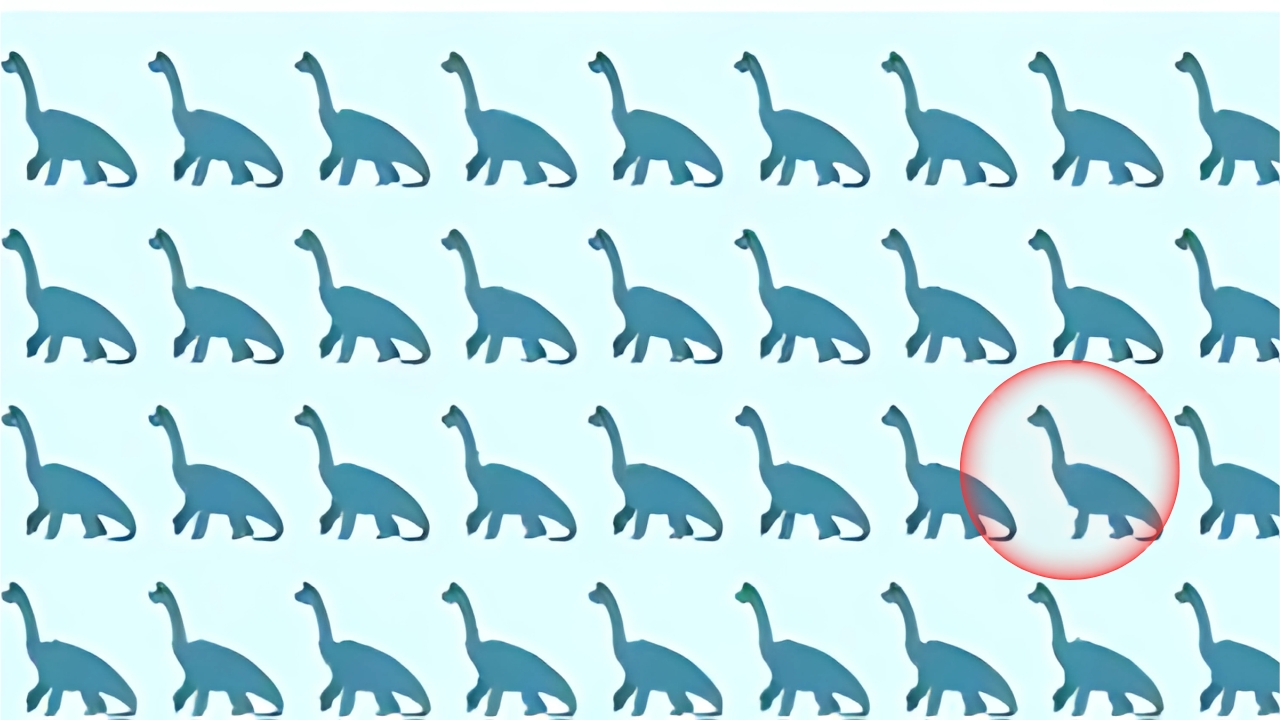Optical illusions continue to mesmerize people across all age groups, with dinosaur-themed visual puzzles gaining remarkable popularity in 2025. These captivating challenges serve dual purposes: entertainment and valuable insights into human visual perception. According to the National Institute of Mental Health, visual processing involves complex neural networks that can be better understood through illusion studies.
The Science Behind Visual Perception and Illusions
Our brain’s visual processing system operates through intricate mechanisms that interpret sensory information. When encountering optical illusions, our mind applies learned patterns and expectations, sometimes leading to misinterpretation of visual data. The Centers for Disease Control and Prevention emphasizes that understanding visual perception is crucial for identifying vision-related health issues.
How Dinosaur Illusions Challenge Our Minds
The “find the different dinosaur” puzzle specifically targets our pattern recognition abilities. These challenges exploit the brain’s tendency to group similar objects together, making subtle differences harder to detect. Research from the National Eye Institute shows that such visual exercises can help assess and potentially improve attention to detail and visual processing speed.
Can You Find the Different Dinosaur

The Psychology of Dinosaur-Themed Visual Puzzles
Why Dinosaurs Capture Our Imagination
Dinosaurs hold a unique position in popular culture, making them ideal subjects for optical illusions. The prehistoric creatures trigger both fascination and curiosity, enhancing engagement with visual puzzles. Educational experts note that combining learning with subjects children naturally find interesting increases retention and participation rates.
Cognitive Benefits of Optical Illusion Practice
Regular engagement with optical illusions offers several cognitive advantages:
- Enhanced visual attention and focus
- Improved pattern recognition skills
- Better understanding of perception versus reality
- Increased patience and persistence in problem-solving
Visual Processing Performance Data
| Age Group | Average Time to Spot Difference | Success Rate | Difficulty Level |
|---|---|---|---|
| 6-10 years | 45-60 seconds | 65% | Moderate |
| 11-15 years | 30-45 seconds | 75% | Easy-Moderate |
| 16-30 years | 15-30 seconds | 85% | Easy |
| 31-50 years | 20-35 seconds | 80% | Easy-Moderate |
| 51+ years | 40-55 seconds | 70% | Moderate |
Educational Applications in Learning Environments
Educational institutions increasingly incorporate optical illusions into curricula to teach visual perception concepts. The Department of Education recognizes visual learning tools as effective methods for engaging students in STEM subjects, particularly in understanding how the brain processes information.
Dinosaur optical illusion Answer

Digital Age Impact on Visual Skills
With increased screen time affecting visual development, optical illusion exercises serve as beneficial training tools. These puzzles help maintain and strengthen natural visual processing abilities that might otherwise decline due to reduced real-world visual stimulation.
Creating and Solving Dinosaur Optical Illusions
Techniques for Effective Puzzle Design
Successful dinosaur illusions rely on specific design principles:
- Consistent visual elements with subtle variations
- Appropriate color contrasts and patterns
- Strategic placement of distinguishing features
- Balanced complexity for target audience
Tips for Improved Performance
To excel at finding differences in optical illusions:
- Scan systematically rather than randomly
- Focus on one section at a time
- Look for variations in size, color, or orientation
- Take brief breaks to reset visual focus
The intersection of paleontology education and visual perception training through dinosaur optical illusions represents an innovative approach to learning. These puzzles demonstrate how entertainment and education can effectively combine to create engaging, beneficial experiences for learners of all ages.
Frequently Asked Questions
Q: How long should it take to find the different dinosaur?
A: Most people can spot the difference within 30-60 seconds, though this varies by individual visual processing speed and puzzle complexity.
Q: Are optical illusions beneficial for brain health?
A: Yes, regular practice with visual puzzles can help maintain cognitive sharpness and improve attention to detail.
Q: Can these puzzles help children with learning difficulties?
A: Visual perception exercises may support children with certain learning challenges, though professional guidance is recommended for specific conditions.
Also Read:-Made in the USA? These Cars Are the Most American You Can Buy
